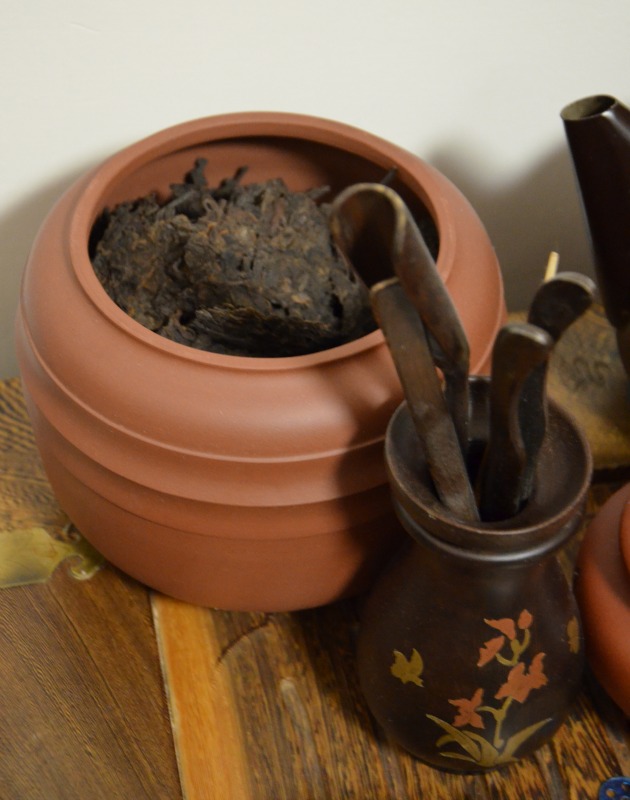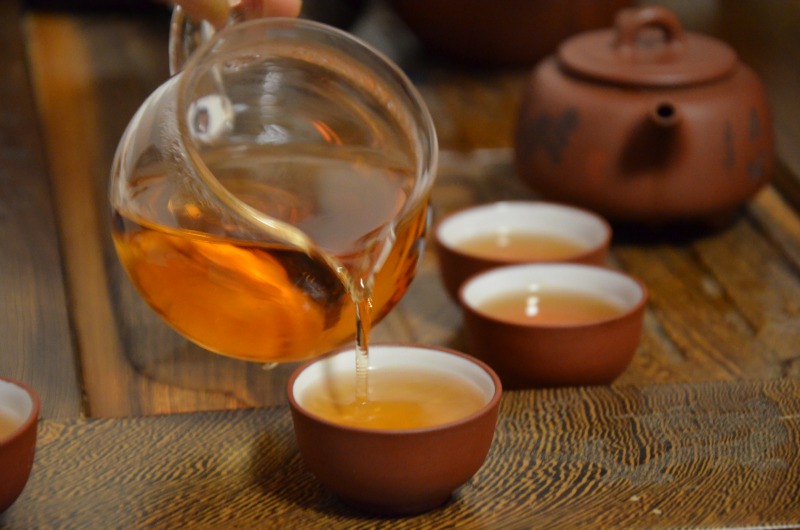 I have mentioned before the unusual things that happen to us here. On Saturday, we experienced another one of those unusual events. We tasted pu’er tea. What’s so special about that? We have tasted pu’er tea before.
I have mentioned before the unusual things that happen to us here. On Saturday, we experienced another one of those unusual events. We tasted pu’er tea. What’s so special about that? We have tasted pu’er tea before.
In fact, as JavaMan has developed his coffee business here, it seemed he’s learned just as much about tea as he has about coffee. His coffee roaster is housed in a friend’s tea shop, and simply by virtue of spending time in the tea shop and with his friend, he’s learned an awful lot about tea. There are many similarities, in fact, to the growing, processing and tasting of tea and coffee.
For the uninformed, pu’er tea (also written some places as pu-erh) is a darker variety of tea, distinct because after the leaves are dried and rolled, they are fermented. The older it gets, the better–and more valuable–it becomes. Pu’er is grown in the Yunnan province of China, the same province from which China’s best coffee is grown. The very best pu’er tea, when brewed and steeped, should be a rich amber color.
Tasting History
So what was so special about the tea we tasted on Saturday?
It came from the Qing dynasty (1644 to 1912)!
We tasted it at the home of some friends, a husband and wife. The husband used to be a government employee, and at that time, received a gift from someone who, when he saw the price of pu’er rising, decided to invest in an old tea factory. After the purchase, he found a room no one had entered and inside was a huge storehouse of pu’er tea that had been kept there, dating back to the Qing dynasty. The tea was believed to have been fermenting since approximately 1800.
How did it taste? Well, I’m hardly a tea expert, but I do enjoy pu’er. It was delicious, and although this will sound odd, I think it did taste old.
And now I can truly say that I have tasted Chinese history!





“it tasted old” made me smile. :)
:) Maybe I should have said it tasted “historical.”